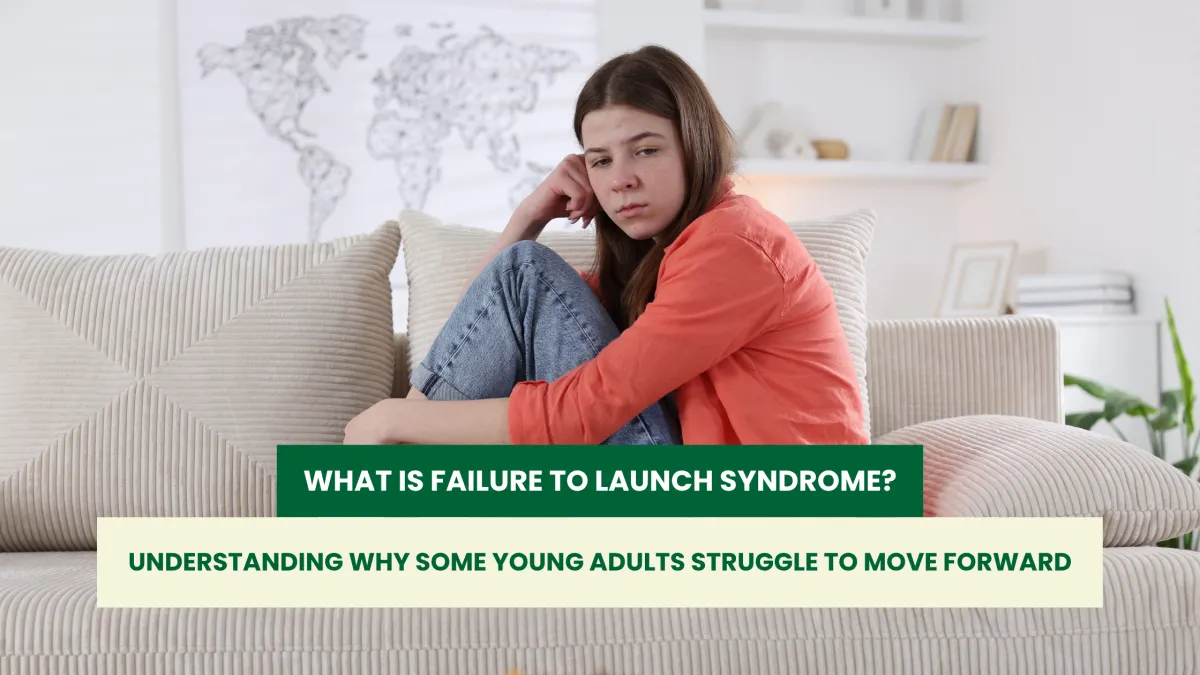
What Is Failure to Launch Syndrome?
"They’re smart. They have potential. So why are they still stuck?"
If you’re a parent of a young adult who seems unable to move forward with life—whether that’s finishing school, getting a job, or moving out—it can feel confusing, frustrating, even scary. You may hear terms like “failure to launch” thrown around by friends, teachers, or therapists. But what does it actually mean?
In this article, we’ll explore:
What “failure to launch” syndrome really is
Why it happens (and why it’s not about laziness)
Common signs and patterns in young adults
How it affects families
What support and solutions actually look like
What Is “Failure to Launch” Syndrome?
“Failure to launch” isn’t an official diagnosis—it’s a popular term that describes young adults (typically between ages 18 and 30) who struggle to make expected transitions into adulthood.
This can include:
Difficulty finishing school or committing to a career path
Unemployment or underemployment
Living at home with no plans to move out
Avoidance of responsibility or independence
Social withdrawal or lack of motivation
It’s often used to describe situations where the young adult appears “stuck” and dependent on parents far beyond what’s typical. But the term is often misleading—and even shaming.
This is not about failure. And it’s not about launching.
It’s about readiness.
Why the Term Can Be Harmful
Calling someone a “failure”—even indirectly—implies personal weakness, moral failing, or a lack of willpower. In reality, most young adults who appear unmotivated are:
Overwhelmed by expectations
Burned out from years of masking or anxiety
Struggling with undiagnosed neurodivergence (especially autism or ADHD)
Paralyzed by perfectionism and fear of failure
Disconnected from their own goals or sense of purpose
Rather than shame, what they need is understanding—and support tailored to what’s really going on beneath the surface.
Common Signs of a Failure to Launch Pattern
Every individual is different, but here are some common patterns:
Living at home with little or no movement toward independence
Dropping out of college or switching majors frequently
Avoiding jobs or quitting quickly due to stress or conflict
Spending excessive time gaming, sleeping, or online
Low self-esteem and frequent negative self-talk
High levels of anxiety or depression, sometimes masked by irritability or isolation
Why It’s More Common Than You Think
The world has changed. The pressures on young adults today are higher—and more complicated—than they were for previous generations:
Housing costs and student debt are significantly higher
Job markets are more competitive, with higher expectations for unpaid experience
Social media creates intense comparison and self-doubt
Mental health support is still difficult to access for many
And for those who are neurodivergent, these challenges can feel insurmountable without tailored strategies and genuine validation.
The Hidden Role of Parents
Many well-meaning parents unintentionally reinforce the “stuck” pattern by:
Over-functioning or rescuing from natural consequences
Pressuring independence without addressing underlying readiness
Confusing dependency with defiance
Focusing on performance over emotional connection
It’s hard to watch your child struggle. But the shift from control to collaboration is often the turning point.
What Young Adults Often Need Instead
1. Emotional Safety Before Expectation
They must feel understood and regulated before they can take risks. Shame shuts down motivation.
2. Scaffolding, Not Shoving
Break goals into tiny, manageable steps. One form filled out. One email sent. Celebrate the start.
3. A New Definition of Success
Focus on values like growth, self-trust, and resilience—not just employment or milestones.
4. Trauma-Informed, Neurodiversity-Affirming Support
Especially if your child is autistic, ADHD, or highly sensitive, they need strategies designed for their brain—not generic coaching or pressure.
Final Thoughts: It’s Not a Launch Pad—It’s a Bridge
The term “failure to launch” may persist in pop culture, but we must reframe what it means. Your young adult is not failing. They are navigating a delayed, detoured, or differently paced path to independence.
With the right understanding, support, and mindset shift, they can move forward—not by being pushed, but by being met where they are.
References
American Psychiatric Association. (2022). Diagnostic and statistical manual of mental disorders (5th ed., text rev.; DSM-5-TR). https://doi.org/10.1176/appi.books.9780890425787
Wood, J. J., McLeod, B. D., Klebanoff, S., & Brookman-Frazee, L. (2021). Emerging adulthood and failure to launch: A developmental analysis. Journal of Child and Adolescent Psychopharmacology, 31(6), 436–444. https://doi.org/10.1089/cap.2020.0220
Settersten, R. A., & Ray, B. (2020). What’s going on with young people today? The long and twisting path to adulthood. The Future of Children, 20(1), 19–41. https://doi.org/10.1353/foc.0.004
